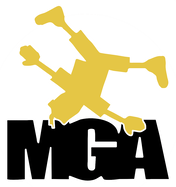|
Athletes to Watch
As the world gears up for the next Olympics, several athletes are standing out with their inspiring journeys and impressive achievements. Here are a few to keep an eye on: Simone Biles, United States: The legendary gymnast, Simone Biles, is making an incredible bid for her third Olympic team at the age of 27. Biles, the 2016 all-around Olympic champion, captured the world’s attention not just with her extraordinary skills but also with her courage. In Tokyo, she won a team silver and a bronze in balance beam despite stepping back from multiple competitions to prioritize her mental health. Her triumphant return last year saw her clinching a record sixth world all-around title, solidifying her status as one of the greatest gymnasts of all time. Sunisa Lee, United States: At just 21, Sunisa Lee has already made her mark in gymnastics history. Lee became the fifth consecutive American woman to win the Olympic all-around title in Tokyo. Her journey hasn't been easy; she has been battling health issues over the past three years. Despite these challenges, Lee remains determined and hopeful to secure a spot on the coveted five-woman U.S. team. Her resilience and dedication continue to inspire many. Rebeca Andrade, Brazil: Rebeca Andrade made history in 2021 by becoming the first South American woman to win a medal in the all-around, taking home the silver behind Lee. Her momentum didn't stop there. In 2022, she earned the world all-around champion title. Andrade is seen as a formidable contender, potentially ending the U.S.'s long-standing dominance in the all-around category. Her remarkable performances have not only elevated her status but also brought significant attention to Brazilian gymnastics. These athletes are more than just competitors; they are trailblazers and inspirations, each with a unique story of perseverance and excellence. As they prepare to showcase their talents on the world stage, they remind us of the extraordinary dedication and passion that define true champions. Coach Brian Keith Shrewsbury (Coach and Co-owner of MGA Gymnastics)
0 Comments
Committing to gymnastics, or any sport, requires immense dedication, discipline, concentration, and sometimes even sacrifice and pain. With the Olympics approaching, athletes from around the world who have dedicated their lives to becoming the best in their sport will compete to be number one in the world. Understanding the time commitment and effort they have invested makes their achievements all the more remarkable.
Coach Brian Keith Shrewsbury (Coach and Co-owner of MGA Gymnastics) No one can make you a winner or a champion but yourself. It is only through hard work and dedication that anyone can hope to achieve greatness. The skills and discipline learned in sports are invaluable lessons that prepare you for the dedication and effort required to build a career or a life centered around your passions.
Young people, with their abundant energy and time, are often the ones who should work the hardest, despite having the least resources. Being an athlete can propel young adults toward success in the real world, providing them with the resilience, discipline, and drive needed to overcome challenges and achieve their goals. Coach Brian Keith Shrewsbury (Coach and Co-owner of MGA Gymnastics) Today, kids face numerous distractions. Smartphones, smartwatches, tablets, and television constantly vie for their attention. As a result, they are so accustomed to interruptions that when asked to sit down and focus, they instinctively reach for something else to occupy their hands, such as water bottles or toys. They constantly need to be entertained.
Sports are an excellent way to get kids away from tablets and phones and help them learn to focus with both their mind and body. In sports, kids don't have the option to give up or switch to something else; they must complete the task at hand, both mentally and physically. They learn that failure is okay—it might not feel good, but they will survive, learn from it, and eventually thrive. Of course, school is important, and tablets and learning devices play a significant role in education. However, only sports teach kids to focus, think, explore, take risks, and use their bodies all at the same time. When they interact with the world around them through sports, they discover that there is so much more beyond the screen. Children should not be all about school, sports, or technology. With technology becoming an increasingly significant part of their lives, we must strike a balance. Kids need opportunities to play, explore, and learn. They need to feel the textures of the outside world to truly come alive and understand what the world is all about. Our goal is for them to learn how to navigate and thrive in the world, which requires teaching the whole child—not just the mind or the body. |
Serving communities for over 60 years.In 1964, our family started a small gymnastics and dance studio outside of Washington D.C. Today, we still have that same small-center feeling with two locations; one in Upper Marlboro, MD and another in Apopka, Florida. Family values are as important to us today as they were back then, we just have a few more students than we used to. It’s important to us to always put our students first and to have a gym that is a positive learning place for everyone. |
MGA Florida |

 RSS Feed
RSS Feed